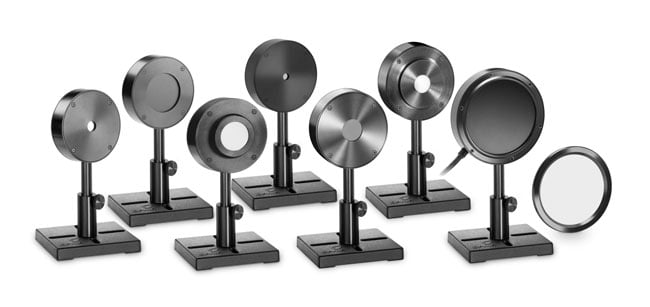About This Webinar
Measuring a pulsed laser is complex. Besides power, you also need to worry about pulse energy, frequency, and pulse width (duration). If you need to measure laser pulse energies — perhaps to monitor a process that uses them — you will most likely run into a variety of issues and challenges.
For instance:
- How pulse frequency and pulse width can limit your measurement range
- Damage threshold vs. pulse width
- Beam size — how much of your aperture should you fill
In this webinar, you will learn how laser energy measurement works and how to do it right.
We’ll cover:
- Technical principles behind energy measurement
- Best practices for making sure you are getting accurate readings
- How to avoid out-of-tolerance issues with your measuring tools
- and more ...
About the presenter:

Mark Slutzki has been with Ophir Photonics since 2004. He currently serves as product manager for the company’s Power and Energy Measurement Solutions. Prior to that, he held similar positions in the semiconductor and telecom industries. Slutzki did military service as a research physicist working on special projects in the Israeli Air Force. He holds a bachelor's degree in applied physics/electro-optics from the Lev Academic Center at the Jerusalem College of Technology.
Who should attend:
- Engineers, technicians, and scientists who use, design, or integrate pulsed lasers or laser systems
- Anyone involved in laser applications who needs clarity on how to correctly and accurately measure laser energy
About Ophir:

With over 40 years of experience,
Ophir provides a complete line of instrumentation including power and energy meters, and beam profilers. Dedicated to continuous innovation in laser and LED measurement, the company holds a number of patents, including the R&D 100 award-winning BeamTrack power/position/size meters; BeamWatch
®, the industry’s first non-contact, focus spot size and position monitor for lasers in material processing; and Spiricon’s Ultracal™, the baseline correction algorithm that helped establish the ISO 11146-3 standard for beam measurement accuracy. The Photon family of products includes NanoScan scanning-slit technology, which is capable of measuring beam size and position to sub-micron resolution. The company is ISO/IEC 17025:2005 accredited for calibration of laser measurement instruments. Their modular, customizable solutions serve manufacturing, medical, military, and research industries throughout the world.